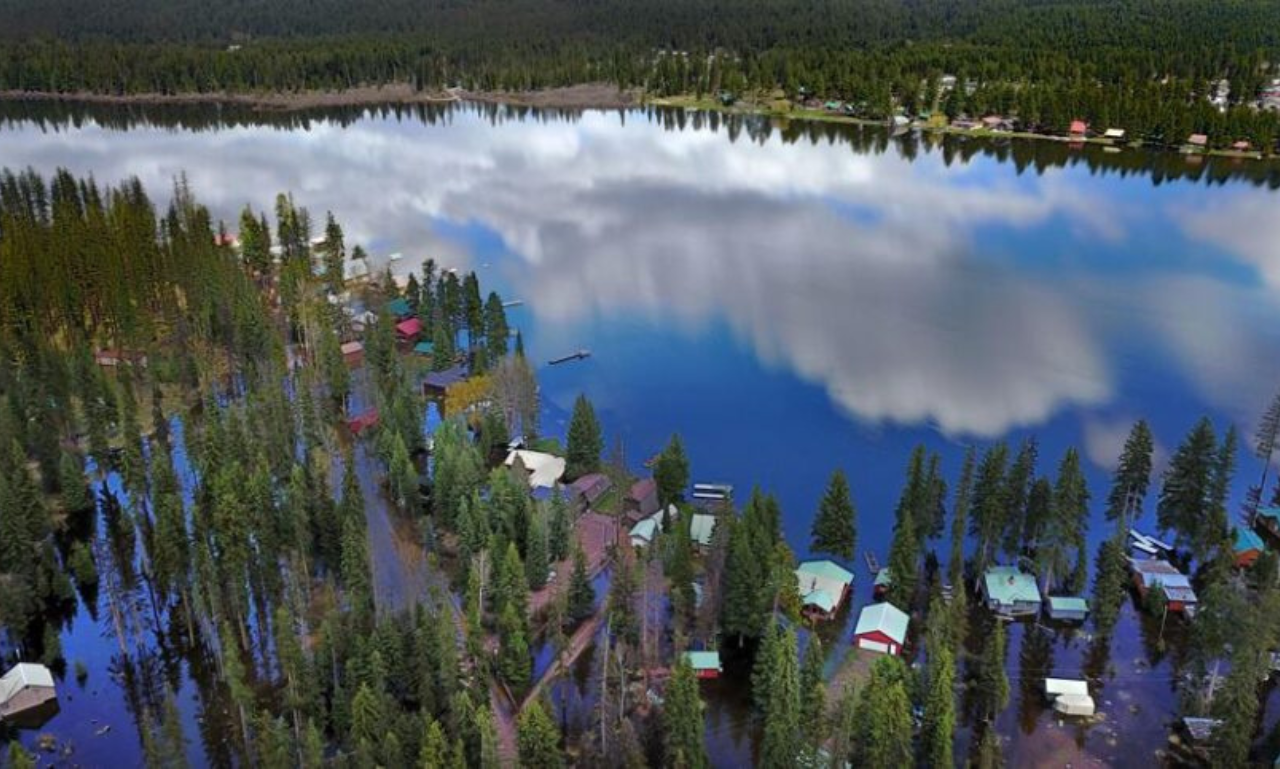Affordable housing has become a critical issue for many communities across the United States, and Seeley Lake, Montana, is no exception. This small, picturesque town, known for its scenic beauty and outdoor lifestyle, is facing a significant challenge that is impacting residents and newcomers alike: the affordable housing crisis. In this blog post, we’ll explore the root causes, the effects on the community, and potential solutions to address the Seeley Lake affordable housing crisis.
The Rise of the Affordable Housing Crisis in Seeley Lake
Seeley Lake, like many rural communities, has seen changes in its housing market over the last several years. What was once a quiet, affordable place to live has become increasingly expensive. Let’s break down some of the key factors that have contributed to this crisis.
Population Growth and Demand for Housing

In recent years, Seeley Lake has seen an influx of new residents. Some of this growth is driven by people seeking to escape larger cities and embrace a quieter, more nature-centered lifestyle. While the town’s population is still relatively small, even a slight increase in the number of people can significantly impact housing availability in such a tight market.
Remote Work and Pandemic-Driven Relocation
The COVID-19 pandemic reshaped the way many people work, leading to a rise in remote work opportunities. This has allowed people to move to more desirable locations, including smaller, rural towns like Seeley Lake. As a result, the demand for homes has skyrocketed, driving up prices and contributing to the Seeley Lake affordable housing crisis. With more buyers competing for a limited number of homes, prices continue to climb, making it difficult for long-term residents and newcomers to find affordable options.
Lack of New Housing Developments
Another contributing factor to the Seeley Lake affordable housing crisis is the lack of new housing developments. There simply aren’t enough homes being built to meet the growing demand. Several factors contribute to this shortage, including zoning regulations, the cost of construction, and limited infrastructure. In a small town like Seeley Lake, these challenges can be even more pronounced.
Zoning and Land Use Restrictions
Zoning laws and land use regulations can have a significant impact on housing availability. In Seeley Lake, much of the land is either protected or zoned for specific uses, which limits the areas where new homes can be built. Additionally, local ordinances may restrict the type of housing that can be developed, further reducing options for affordable housing.
The Impact of Vacation Rentals
One of the more unique aspects of the Seeley Lake affordable housing crisis is the impact of vacation rentals on the housing market. As Seeley Lake is a popular tourist destination, many property owners have turned their homes into short-term vacation rentals through platforms like Airbnb. While this can be profitable for homeowners, it reduces the number of long-term rental properties available for residents. This trend has exacerbated the housing shortage, leaving fewer affordable rental options for people who live and work in the area year-round.
The Trade-Off Between Tourism and Community Needs
Seeley Lake’s tourism industry plays a significant role in the local economy. However, the rise in vacation rentals highlights the tension between attracting tourists and meeting the housing needs of the community. While tourism boosts the economy, it also makes it harder for local residents to find affordable housing. This dilemma is a core aspect of the Seeley Lake affordable housing crisis, as the town tries to balance the needs of both tourists and locals.
The Effects of the Affordable Housing Crisis on Seeley Lake
The Seeley Lake affordable housing crisis doesn’t just impact home buyers; it has wide-reaching effects on the entire community. From economic consequences to social challenges, the crisis is shaping the future of Seeley Lake in various ways.
Displacement of Long-Time Residents
One of the most troubling consequences of the housing crisis is the displacement of long-time residents. As housing prices rise, many locals find themselves unable to afford their homes. This is especially true for renters, who face the prospect of rent increases or eviction if landlords choose to sell their properties or convert them into vacation rentals.
Impact on Seniors and Low-Income Families
Seniors and low-income families are particularly vulnerable in the Seeley Lake affordable housing crisis. Many retirees live on fixed incomes and may struggle to keep up with rising property taxes or housing costs. Similarly, low-income families may find themselves priced out of the market altogether, forcing them to move away from the community they’ve called home for years.
Workforce Challenges
Affordable housing is also essential for the local workforce. In Seeley Lake, many workers are employed in industries such as tourism, retail, and services—jobs that often don’t pay high wages. The lack of affordable housing makes it difficult for workers to live in the community, forcing some to commute long distances or leave their jobs entirely.
Effects on Local Businesses
Local businesses rely on a stable workforce to operate effectively. The Seeley Lake affordable housing crisis has made it harder for businesses to attract and retain employees, leading to staff shortages and decreased productivity. If workers cannot find housing, businesses may struggle to remain viable, further damaging the local economy.
Possible Solutions to the Affordable Housing Crisis
While the Seeley Lake affordable housing crisis is a complex issue, there are potential solutions that could help address the problem. From policy changes to community-driven efforts, a combination of strategies will likely be needed to create lasting change.
Building More Affordable Housing
One of the most direct solutions is to build more affordable housing units in Seeley Lake. This could involve encouraging developers to construct smaller, more affordable homes or apartment complexes that cater to low- and middle-income residents. However, this will require overcoming some of the zoning and regulatory challenges mentioned earlier.
Incentives for Affordable Housing Development
Local governments can play a role by offering incentives for developers to build affordable housing. These incentives might include tax breaks, grants, or relaxed zoning regulations for projects that prioritize affordability. By making it financially viable for developers to invest in affordable housing, the community can begin to address the shortage.
Regulation of Short-Term Rentals
Another possible solution is to regulate short-term vacation rentals. By imposing limits on the number of properties that can be used for short-term rentals, Seeley Lake could increase the availability of long-term rental housing for residents. Some communities have already adopted similar policies, which help ensure that local residents have access to affordable housing options.
Creating Rental Caps
In addition to regulating short-term rentals, implementing rent control or rent caps could help stabilize the housing market in Seeley Lake. By limiting how much landlords can raise rents each year, the community could protect low- and middle-income renters from being priced out of their homes.
Community-Led Housing Initiatives
Local residents and organizations can also play a role in addressing the Seeley Lake affordable housing crisis. Community-led initiatives, such as housing cooperatives or nonprofit housing organizations, can help create affordable housing options tailored to the needs of the community.
Land Trusts and Affordable Housing
One innovative approach is the creation of community land trusts. These trusts acquire and manage land for the benefit of the community, ensuring that it is used for affordable housing or other community needs. By keeping land in community hands, Seeley Lake can maintain a supply of affordable homes that remain accessible to residents, even as the market evolves.
Conclusion: Finding a Path Forward
The Seeley Lake affordable housing crisis is a multifaceted challenge that requires collaboration between local governments, businesses, residents, and developers. While there is no one-size-fits-all solution, addressing the root causes of the crisis—such as population growth, vacation rentals, and zoning laws—can help create a more sustainable and affordable housing market for the community.
As Seeley Lake navigates the complexities of its housing market, the town must find ways to balance its appeal as a tourist destination with the needs of its long-time residents. Only by working together can the community ensure that Seeley Lake remains a vibrant, affordable place to live for years to come.



